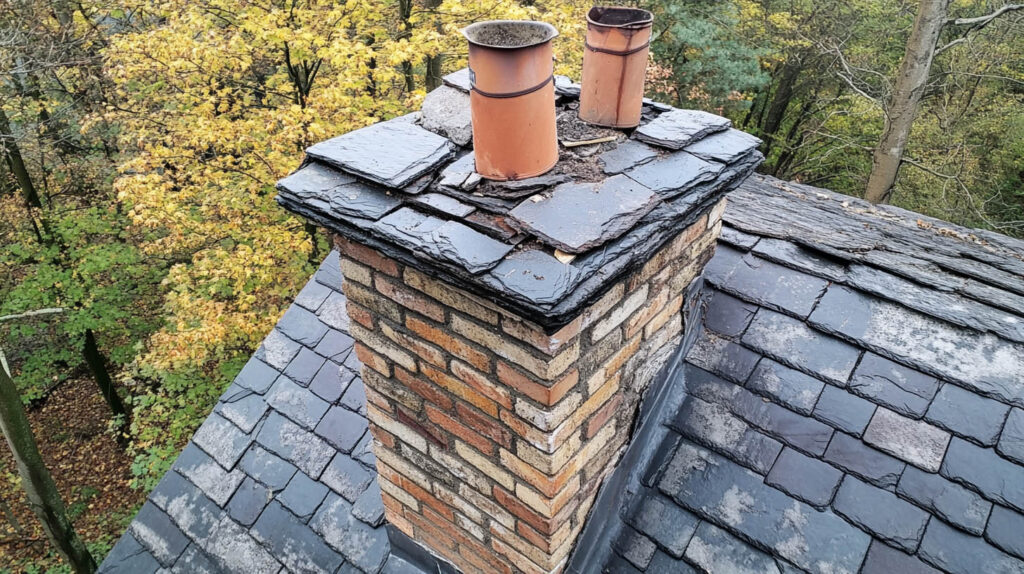
Blog
Chimney Damage: How It Affects Your Roof and How to Fix It
A damaged chimney can lead to severe problems for both the structure of your roof and the safety of your home. From water damage to potential fire hazards, recognizing the signs of chimney damage and addressing them promptly is essential. Avenue Roofing stresses the importance of timely chimney repairs to protect both your roof and home. Here are the key indicators of chimney damage and why fixing them should be a priority.

1. Damaged Chimney Crown
The chimney crown is the first line of defense against external elements. Even small cracks in the crown can allow water to seep into the chimney, leading to more significant problems like moisture buildup and animal intrusion. Small cracks can be sealed, but significant damage may require a full replacement. Ensuring the chimney crown is weatherproof is essential to avoid larger issues.
2. Deteriorating Chimney Flashing
Chimney flashing is a sheet of metal that seals the connection between the chimney and the roof. Over time, flashing can crack, rust, or become loose, allowing water to seep into the roof. This moisture can cause long-term water damage that might remain unnoticed until the damage becomes extensive. It’s best to replace damaged flashing to prevent leaks and protect the roof structure.
3. Cracked Flue Liner
The flue liner channels heat and smoke out of the chimney while protecting its structure from excessive heat. A cracked flue liner poses a significant fire hazard, as it allows heat to escape into areas it shouldn’t reach. If pieces of tile are found in the firebox, it’s a clear sign of a damaged flue liner, requiring immediate repair.
Tip: Address flue liner damage as soon as possible to prevent fire risks.
4. Spalling Chimney Bricks
Spalling occurs when moisture infiltrates the porous bricks of the chimney, causing them to weaken and eventually fall apart. This can lead to serious structural damage if left untreated. Regular inspections can catch spalling early, allowing repairs before the entire chimney is compromised.
5. Issues with Mortar Joints
Over time, the mortar joints that hold the bricks together may deteriorate due to weather exposure. Damaged mortar joints expose the chimney and roof to moisture, leading to further structural problems. Cracked joints also allow smoke and heat to escape into areas where they shouldn’t, creating a potential fire risk.
Unique Fact:
According to the Chimney Safety Institute of America (CSIA), regular chimney inspections can prevent 90% of chimney fires caused by structural damage. Timely repairs are crucial for both safety and roof integrity.
FAQs
1. How do I know if my chimney is damaged? Common signs include cracks in the chimney crown, damaged mortar joints, spalling bricks, and rust on the firebox or damper. A chimney inspection will reveal more detailed issues.
2. Can chimney damage affect my roof? Yes, damaged flashing, spalling bricks, or excessive moisture from a damaged chimney can cause water damage to your roof and lead to leaks and structural problems.
3. How often should I have my chimney inspected? It’s recommended to have your chimney inspected at least once a year to catch any damage before it worsens.
Conclusion: Maintaining the structural integrity of your chimney is essential to protect both your roof and your home. Regular inspections and timely repairs can prevent costly damage and ensure your chimney remains in good working order.
To learn about the different types of roofing shingles and which is best for your home, click here.



